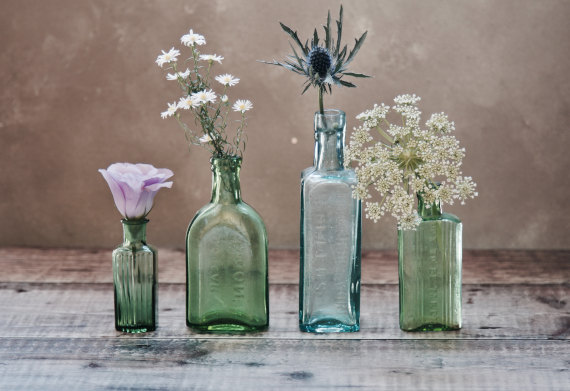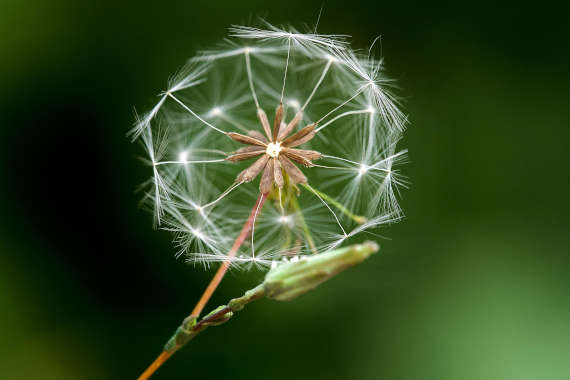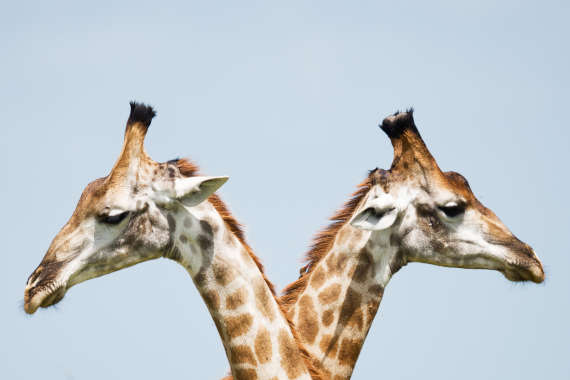How do you proceed to grow and develop as a fine art photographer? Basically, regular use of your camera with deliberate intent, while paying attention to the following, is what brings it about.

Photo by Milad Fakurian/Unsplash
1. Pursue the Goal
To make images that stir the viewer’s thinking and emotions.
2. Develop Your “Seeing” Skills
It’s the first and most important skill that you need to learn.
Seeing Exercises. Set aside 45 minutes from time to time around your home, with your camera and a subject that has your sustained interest. Relax for a few minutes then start taking pictures. Study part of your subject for a moment or two, then re-focus on another part of your subject and study it for a while. Become aware of colors and shapes. See how many details you can find. Then note the following:
- Personal responses: Tune in to your feelings/thoughts as you locate the subject matter.
- Impression: Look at your chosen subject matter, or any part of it, and see it simply as a geometric shape or an arrangement of geometric shapes. Note the position where things look most graphically appealing.
- Expression: What does the subject matter seem to express in the way of sensation? Rough/smooth? Hot/cold? Sharp/dull? Hard/soft? Moving/still? What about emotion and mood? Love/hate? Joy/sadness? Anger/delight? Peace/turmoil? Tranquility/disturbance? Respond with your perceptions of sensation and emotion.
- Meaning: What ideas does the subject matter seem to suggest? Respond with your intellect.
- Subject Theme: In view of your personal responses, the graphic impression, what is expressed and seems to be said, decide upon a subject theme, the main idea/feeling you wish to convey to the picture viewer.
3. Develop Fresh Ways of Seeing
You can get into a visual rut of looking for the same old subject matter and then photographing it in the same old way, producing yet again the same old kind of pictures. You become bored and find yourself in the doldrums. When this happens, or better yet, before it happens, you need to know what to do about it.
A good way to break habitual seeing rules that gain unwanted control over your picture-making is to, first of all, write them down. Next, with list in hand, make about 40 pictures while deliberately contradicting your visual ‘habit’ rules.

Photo by James Cousins/Unsplash
When you examine the resulting images keep an open mind. Remember, you’re looking for new ideas so look for either images you strongly like or dislike. Then take some time to figure out in each case what makes you feel that way, and how you might go about making more similar-but-improved pictures. Bear in mind, you want to be sensitive, and open, to chance.
Finally, be sure to apply the new things you learn as soon as possible. And remember that the exercise above for thinking and ‘seeing’ in new ways, can be done almost any time and anywhere—not just when you’re taking pictures. Performing this exercise from time to time will keep you out of a rut in your fine art photography and also help you find new ways of seeing and making fine art.
4. Develop Your Imagination
Making fine art photographs involves the use of free imagination. Enrich your imagination by going to art galleries and studying art in various media and noting your personal tesponses, the graphic impression, expression, and meaning. Practice pre-visualizing before going out to take pictures; imagine yourself taking pictures, see the resulting pictures—fantasize photo adventures! Start a train of photo thought just before going to sleep and then sleep on it. In these ways you can develop your imagination.
5. Practice Isolating and Choosing
Making fine art photographs also involves the following:
Isolating. Separating the various parts of the subject matter from the whole and looking at a subject and noting: 1) what evokes your personal responses, 2) what constitutes the elements of impression, expression, and meaning. You can, and should, try to improve in your abilities to isolate by means of practice, and you can practice almost anywhere, anytime.

Photo by Elia Pellegrini/Unsplash
Choosing – picking out the essential subject matter elements from everything else, in order to bring about the most effective arrangement within the picture, through camera position, focal length, depth of field, shutter speed, over/right-on/under-exposure, et cetera.
6. Incorporate Expression and Meaning
With regard to your subject matter’s inherent expression and meaning, it comes about through symbolism. You need to become acutely aware of the symbolism(s) inherent in any subject matter. Such are called ‘symbols of content.’ You also need to become aware of those symbolism that can arise within your picture because of the way you choose to photograph the subject matter—symbols of style. The symbols of content and style have to work together. An analogy: the words of a marriage proposal (content) and the tone/inflection of voice used (style) must go well together, being ear-pleasing (impression), having appropriate feeling (expression), and clearly expressed thoughts (meaning), for effective communication of a main, central idea—“will you marry me?” (subject theme).
Expression: Bear in mind that people in general respond with different sensations/emotions to different shapes, textures, lines, tones, colors, patterns, et cetera on the basis of qualities they perceive in them. Thus, a picture of snow can express the sensation of cold or the emotion of sadness. There is something inherent in the snow’s shapes or color that evokes a sense of coldness or sadness. Through color and shape and other qualities, we recognize the expression of sensations and feelings or moods. Whenever something draws your interest, try to notice first the inherent expression. Respond to your subject matter with your perception of sensations, emotions, and moods.
Meaning: Not only do people respond with perception of different sensations/emotions to the visual elements in subject matter, but they also respond with perception of different ideas about them. Thus, a picture of a mountain may suggest ideas such as majesty, permanence or isolation. So, try to notice inherent meaning in your chosen subject matter. Respond mainly with your intellect to this aspect of the subject matter.
7. Exercise Control by Awareness of Photography’s Unique Properties:
There are a number of fundamental characteristics of photography that distinguish it from other visual media, and you need to be aware of them when making pictures.

Photo by Mike Enerio/Unsplash
- An existing object always in front of the camera
- Ability to precisely render detail
- Choice of the moment of picture taking
- The speed of exposure
- Can take advantage of fortuitous events
- Complete dependance on light
- Camera sees some objects differently from the human eye, because we mentally correct distortions while the camera does not
- Different camera lenses see space in different ways
As a fine art photographer you must examine the picture carefully through the viewfinder in order to preview what the camera will record and be sensitive to any elements that will not be recorded as the eye perceives them. Then you can consider whether or not they need to be corrected and, if they do, how to go about doing it.
8. Employ the Basics of Good Compositions
The fine art photographer’s thinking and efforts to visually arrange a picture’s various elements within the camera’s view-finder, according to the principles of visual design to effectively communicate what he sees, feels, and thinks, in connection with the subject matter, doing so simply, freshly, and to as many as possible.
Elements
The graphic components, basic visual things, that make up a picture. Keep in mind that each of these elements not only contributes to the impression of a picture but also to the ‘expression’ and ‘meaning’ as well. The components are: Lines, Shapes, Tones, Colors, Mass, Space, Texture, Perspective
Principles
The basic guidelines that need to be applied in making a fine picture.
- Subject Theme: The paramount principle. At the very outset of making fine art photographs the selection of an appropriate ‘subject theme’ is essential. It is a thematic idea which can readily underlie the subject matter, and is developed or elaborated upon in a picture of the subject matter. Making an extended,detailed, and specific word description of things is the quickest, most helpful, and practical means of deriving an appropriate subject theme.
- Order: Organization of the picture to bring about simplicity and clarity to the overall impression,expression, meaning and subject theme.
- Dynamics: contrasts of any sort produce tension, and bring dynamics into a picture; a sense of force,vitality, life, etc; much of it is already present in the the subject matter with all of it’s inherent contrasts (inlines, shapes, tones, colours, etc) – the challenge is simply to control, direct and organize them.
- Dominance: some aspect of the composition influences it more strongly than all other aspects. The dominant part of a photograph is often called the centre of interest.
- Balance: there are two kinds of balance; symmetrical (formal) – conveys regimented formality, stiffness, staticness, etc, and asymmetrical (informal) – is more dynamic, with tension between objects of different size, colour, shape, etc. Balance may be achieved either through the ‘impression’ of objects in the picture,or through their ‘expression’ and ‘meaning’ in the picture.
- Proportion: has to do with the relative size of objects in the picture space. The proportion of space allocated to a major object in relation to that given a minor one
- Pattern/Rhythm: are closely related. A pattern is a specific configuration of visual elements—a design. Rhythm involves repetitions of a pattern, at regular intervals. It brings both order and a sense of the dynamic to a picture
- Deformation: the deforming (altering the overall shape) of visual elements which makes them unstable,creating tension. It can also create perspective (the impression of depth) in the picture or subject matter. Both camera position and lens choice affect deformation strongly.

Photo by Andrey Tikhonovskiy/Unsplash
9. Use Various Approaches, Types and Avoid the Pitfalls of Formulas
Picture Approaches: there are three basic approaches to composing fine art photographs:
- The Introspective approach: in which primarily your personal feelings and ideas for the subject matter determine the picture’s design and composition.
- The Extrospective approach: in which, regardless of your natural response to the subject matter, you’re guided solely by the subject matter’s inherent visual characteristics in determining picture composition.
- The Ambispective Approach: an approach which is some combination of the two foregoing approaches. It is the best approach and the one to use most often.
Picture Types: A fine art photograph may be one of the following types as determined by the artist:
- Documentary: the picture’s emphasis is on simply portraying the subject matter, transmitting visual information about it as accurately as possible.
- Interpretive: the picture’s emphasis is on conveying the artist’s feelings and thoughts about the subject matter, which can result in a very impressionistic image.
- A Combination: picture emphasis is some combination of interpretive and documentary
Picture Formulas: Do not turn your fine art photography into a set of technique formulas. It will stifle intuition, and emotional input, and put technique ahead of expression and meaning.
10. Watch for the Interesting and Practice Composition
Always watch for things that excite your interest. When something does so, examine it closely and begin verbalizing, “What is it that attracted me?” Visually explore the subject matter and give thought to the subject matter’s impression, expression, and meaning all the while verbalizing to yourself as you do so. Decide on a picture aking approach and a particular picture type.

Photo by Vincent van Zalinge/Unsplash
With the ambispective approach you will proceed by crystallizing and condensing:
- your personal thoughts and feelings about the subject matter;
- what is the most graphically appealing aspect of the subject matter;
- what the subject matter inherently expresses; and
- what the subject matter inherently says, into a concisely worded subject theme, while seeing in your mind’s eye a final picture which nicely and effectively conveys it. Your chosen subject theme serves as your primary guidance for all of the compositional efforts that follow.
11. Continually Make Pictures
The most important thing you can do with your camera is use it. By shooting a few minutes every day, you’ll develop your skills and abilities as a fine art photographer, and soon have an extensive collection of fine art photographs. Otherwise, you will lose your skills and ability. To have the joy of doing good work, and growing as a fine art photographer, you have to continually make pictures!
About the Author:
John Maxymuik authored this article for those photographers who want to transition into fine art photography. To see examples of John’s art photography go to his art photography website at ambienceimages dot net.
Like This Article?
Don't Miss The Next One!
Join over 100,000 photographers of all experience levels who receive our free photography tips and articles to stay current:






Fine art photography” is basically speculative work created without any restrictions or client influence. The imagery is far more revealing of the photographer’s personality than other types of photography.
Thanks for share this article, you know what, now I have more knowledge about Fine art and also I understand about Conceptual and fine art photography,,
Many thanks.
The article is interesting and useful. So why are the illustrations of “Fine Art Photographs” no better than the shots that I throw away as boring, pretentious, or technically inadequate?
Just yesterday I took my daughter’s photography work to a fine art photography event that the local museum was having. Oh, her work was quite beautiful to see and you can tell at how much time she put into expressing that thematic idea that she was trying to express. It’s amazing at how good of an art a young person has and can create.
Really great article to understand fine art photography points!! Thanks for sharing!!